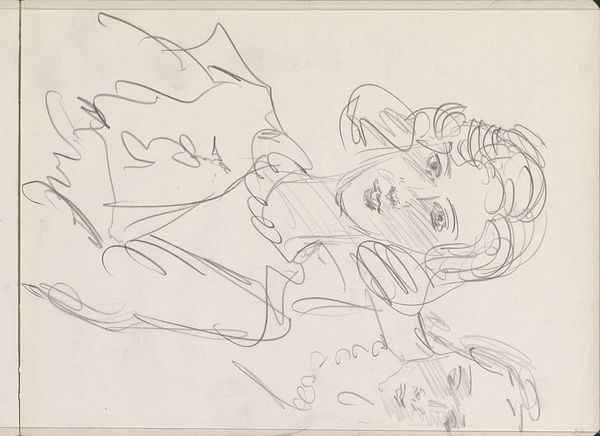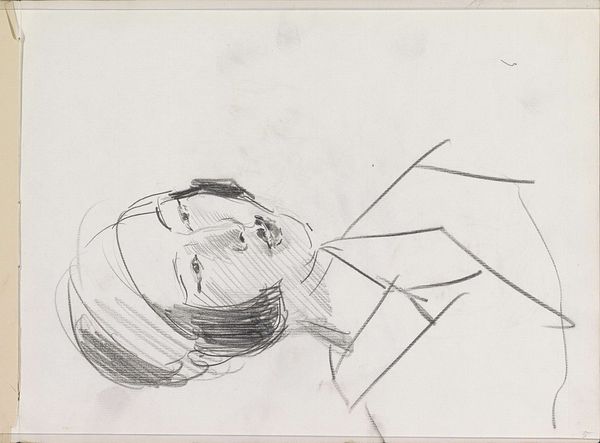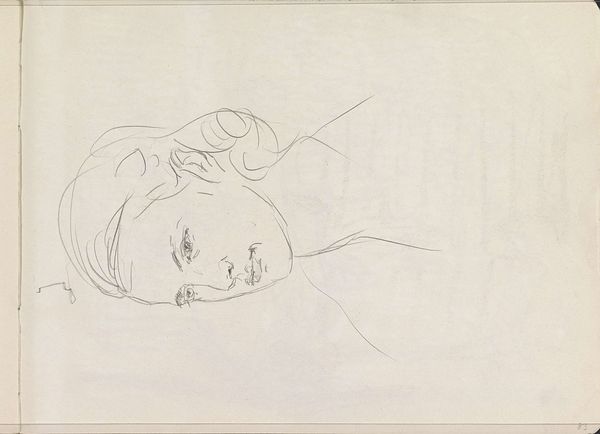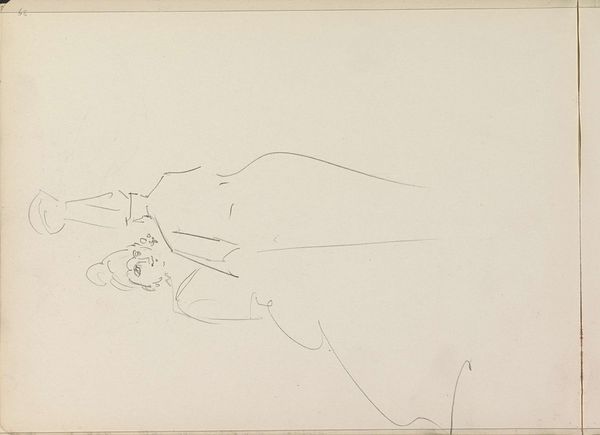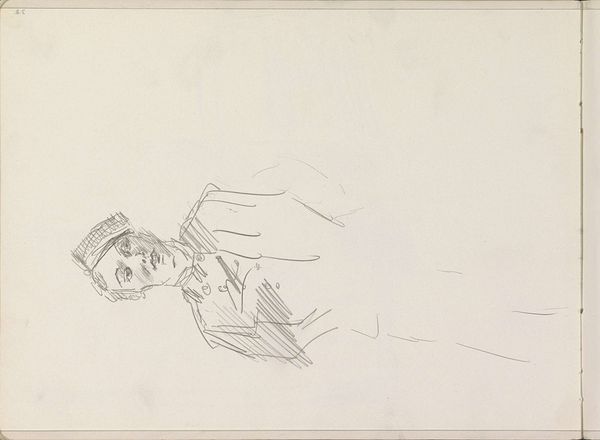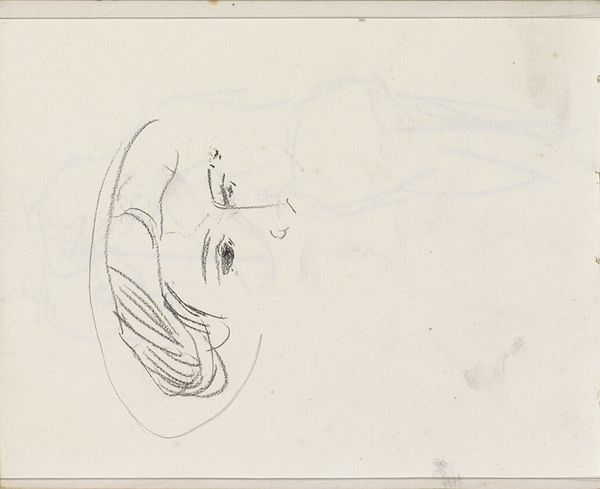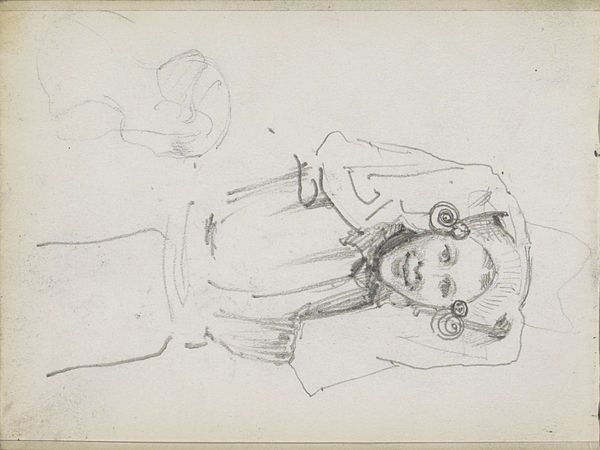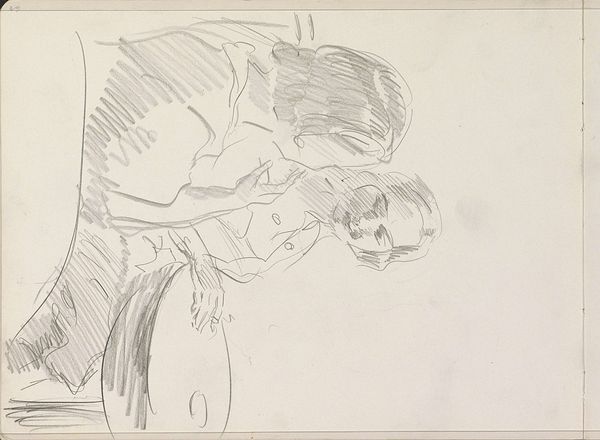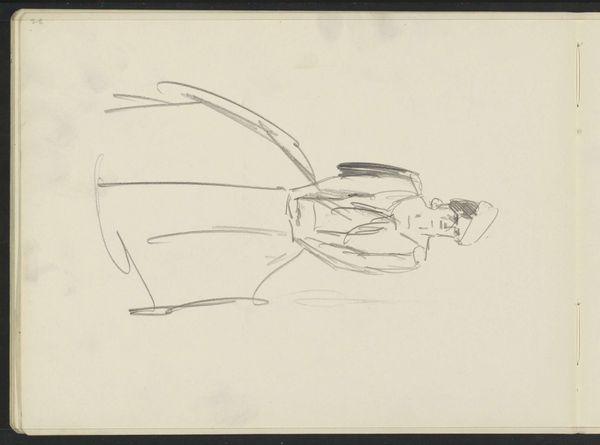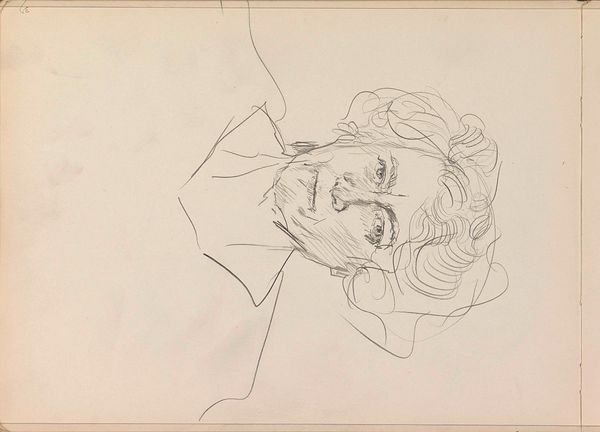
#
light pencil work
#
pen sketch
#
personal sketchbook
#
idea generation sketch
#
sketchwork
#
ink drawing experimentation
#
pen-ink sketch
#
sketchbook drawing
#
sketchbook art
#
initial sketch
Copyright: Rijks Museum: Open Domain
Curator: I am immediately drawn to the vulnerable stillness evoked by Isaac Israels's sketchwork here. There's an immediacy to the pencil strokes that feels both intimate and fragile. Editor: Indeed. This is “Two Figure Studies” by Isaac Israels, dated around 1915 to 1925, residing here at the Rijksmuseum. What we're seeing is likely a page from the artist’s personal sketchbook. Curator: Knowing it comes from a sketchbook certainly shifts my perspective. I start thinking about Israels's artistic labor, his process, the actual physical act of sketching. What kind of pencil did he use? How much did the sketchbook cost? It all plays into the creation. Editor: And who were these women? Were they models, or did Israels observe them in a public space, perhaps reflecting societal constraints imposed on women at the time? These light sketches prompt questions about spectatorship, class, and gendered experience. Curator: Absolutely. And how fascinating to consider Israels engaging in what we might call ‘preparatory labor.’ Are these quick drawings ideas toward another artwork or are they simply experimenting? To consider sketchbooks and drawings as endpoints is really essential, isn't it? Editor: Sketches like these provide insights into artistic development, often highlighting techniques deemed unimportant for completed artwork. Thinking intersectionally, the act of sketching could act to both solidify or resist contemporary canons and accepted academic styles. Curator: Look at how minimal these lines are, almost economical. He isn’t wasting graphite. This makes me appreciate Israels's deliberate material choices and reminds us of the costs of art materials. This work helps dismantle this hierarchical separation between sketching and 'finished' art. Editor: And the vulnerability! The unposed, almost fragmented quality creates space for a multitude of narratives. Considering Israels was active during a time when representation of women was dominated by the male gaze, are these sketches actively pushing back? Curator: That's a complex question. What remains central, for me, is the value of these pieces as artifacts of artistic production in themselves. This opens many routes in looking at labor value. Editor: By situating the work within these complex social and political networks, we can better recognize its power to encourage introspection on these matters. Thank you for your insights. Curator: The pleasure was mine! Thank you for exploring all the social matters interwoven in the pencilwork.
Comments
No comments
Be the first to comment and join the conversation on the ultimate creative platform.
